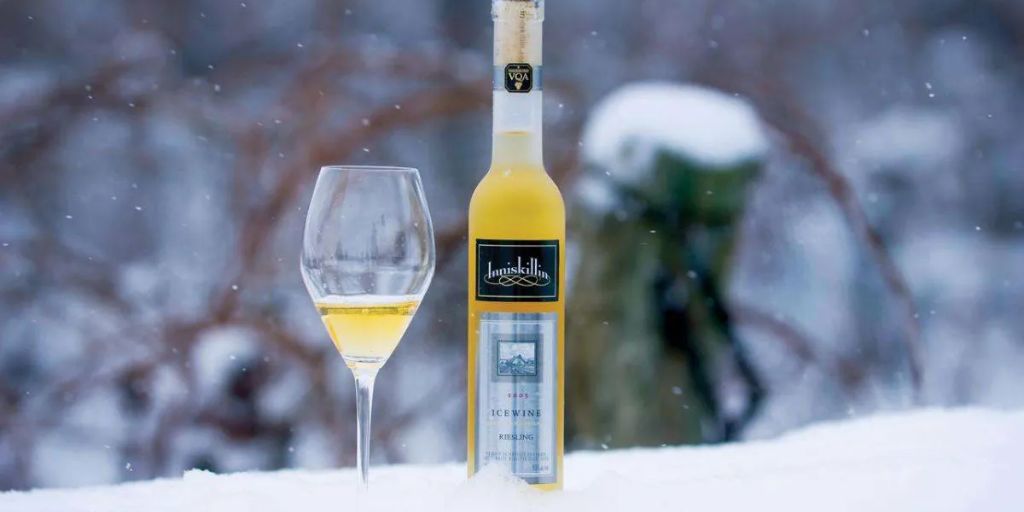Wine is a beverage that takes many forms, from bold reds to crisp whites, sparkling bubblies to deep fortified ports. But among the most unique and luxurious styles sits ice wine—a naturally sweet, intensely flavored wine created under conditions so rare that its production is almost a miracle of nature.
Often seen as a delicacy or special-occasion wine, ice wine (or Eiswein, as it’s known in German) isn’t just sweet—it’s complex, elegant, and packed with concentrated fruit character. But what exactly is ice wine, and how is it made? This article explores its origins, production, flavors, and the effort required to bring just one bottle to life.
The Basics: What Is Ice Wine?
Ice wine is a dessert wine made from grapes that have frozen while still on the vine. These grapes are harvested and pressed while frozen, causing the water in the grapes to remain as ice while the sugars, acids, and dissolved solids are extracted in a highly concentrated juice. The resulting wine is intensely sweet, aromatic, and rich—often featuring notes of peach, apricot, honey, and tropical fruits.
Unlike other sweet wines that may be made by late harvesting, drying the grapes, or using botrytis (noble rot), ice wine relies solely on natural freezing, making it one of the purest expressions of sweet wine.
Where Did Ice Wine Originate?
Ice wine originated in Germany during the late 18th century. According to legend, a German winemaker faced an early frost and decided to harvest the frozen grapes anyway. Upon pressing them, he found that the resulting juice was exceptionally sweet and flavorful. Thus, a tradition was born.
Germany and Austria maintained a stronghold on ice wine for centuries, producing small quantities of Eiswein from grapes like Riesling and Grüner Veltliner. However, today, some of the most acclaimed and consistent ice wines come from Canada, especially Ontario’s Niagara Peninsula. Canada’s reliably cold winters make it one of the only regions where ice wine can be produced almost every year.
Other countries like the U.S. (especially New York’s Finger Lakes), Switzerland, and even China have joined the production of ice wine, though it remains a highly specialized and often risky endeavor.
How Is Ice Wine Made?
Creating ice wine is one of the most labor-intensive and weather-dependent processes in the wine world. It requires patience, precision, and a bit of luck.
1. Grapes Are Left on the Vine Late Into Winter
Unlike typical wine grapes harvested in late summer or early fall, ice wine grapes stay on the vine into December or even January. This extended hang time allows the grapes to dehydrate slightly, increasing sugar concentration.
Winemakers wait until temperatures drop to at least -8°C (17.6°F)—a critical point at which the water in the grapes freezes but sugars and other solids remain unfrozen.
2. Harvest Happens at Night
Timing is everything. Once the right temperature hits, usually in the early hours of the morning, workers rush to harvest the frozen grapes by hand. It’s a race against time, often carried out in freezing temperatures and sometimes snow.
Mechanical harvesters are rarely used because frozen grapes are fragile, and handpicking ensures they remain intact and usable.
3. Pressing the Frozen Grapes
The harvested grapes are immediately taken to the press while still frozen. Because much of the water content is ice, only a small amount of concentrated juice is extracted—sometimes as little as one-fifth of what you’d get from non-frozen grapes.
This ultra-rich juice is packed with sugars, acids, and flavors but is extremely viscous, making fermentation a slow process.
4. Long, Cool Fermentation
Because of the high sugar content, fermentation can take months to complete. Many ice wines ferment for 3–6 months in stainless steel tanks to preserve fruit purity, though some are aged in oak for added depth and texture.
The end result is a wine with high acidity to balance its sweetness, a low to moderate alcohol content (typically around 8–12%), and a complex, fruity profile.
Grape Varieties Used in Ice Wine
The choice of grape greatly influences the flavor of ice wine. Some of the most commonly used varieties include:
-
Riesling: Perhaps the most classic ice wine grape. It produces wines with notes of peach, apricot, honey, and citrus with vibrant acidity.
-
Vidal Blanc: Popular in Canada, Vidal is hardy and offers tropical fruit flavors and good balance.
-
Cabernet Franc: A red variety used for rosé-style or red ice wines with notes of strawberry, raspberry, and cherry.
-
Gewürztraminer: Aromatic and floral, with lychee and spice flavors.
-
Chenin Blanc and Grüner Veltliner: Less common but capable of producing distinct, flavorful ice wines.
How Does Ice Wine Taste?
Ice wine is known for its intense concentration and lush sweetness, but its defining feature is balance. Despite its sugar content, a great ice wine also has high acidity that keeps it lively and prevents it from becoming cloying.
Common flavor notes include:
-
Stone fruits like apricot and peach
-
Tropical fruits like mango, pineapple, and passionfruit
-
Honey and marmalade
-
Citrus zest and spice (in some varieties)
Red ice wines may show flavors of strawberry compote, cherry, and cranberry, often with a hint of earthiness.
Serving Ice Wine
Ice wine is best served chilled, around 8–10°C (46–50°F), in small dessert wine glasses. Because of its sweetness and richness, it is typically served in 2 to 3 oz pours.

Food Pairings:
-
Blue cheese or strong washed-rind cheeses
-
Foie gras or pâté
-
Fruit tarts, cheesecake, or crème brûlée
-
Spicy Asian cuisine, where the sweetness balances heat
Ice wine can also be enjoyed on its own as a digestif, especially after a celebratory meal.
Why Is Ice Wine So Expensive?
Ice wine is often priced significantly higher than regular wines. Here’s why:
-
Low Yields: Only a small amount of juice is extracted from each frozen grape.
-
Labor Intensive: Hand-harvesting in sub-zero temperatures is challenging and expensive.
-
Weather Risk: A sudden thaw or unexpected rot can ruin the entire crop.
-
Slow Fermentation: Long, careful winemaking increases production time and cost.
For these reasons, a 375ml bottle of premium ice wine can range from $40 to $150 or more.
Final Thoughts
Ice wine is a rare and beautiful expression of winemaking—one that relies not just on technique, but on nature’s cooperation and a winemaker’s tenacity. It’s a wine that isn’t rushed, isn’t faked, and isn’t made in mass. It’s crafted in the cold, one frozen grape at a time, and bottled as a liquid jewel.
Whether you’re a seasoned wine lover or a curious beginner, tasting a glass of ice wine is an experience worth savoring. Its sweetness tells a story of frost, patience, and the extraordinary lengths humans will go to capture nature’s fleeting gifts.


